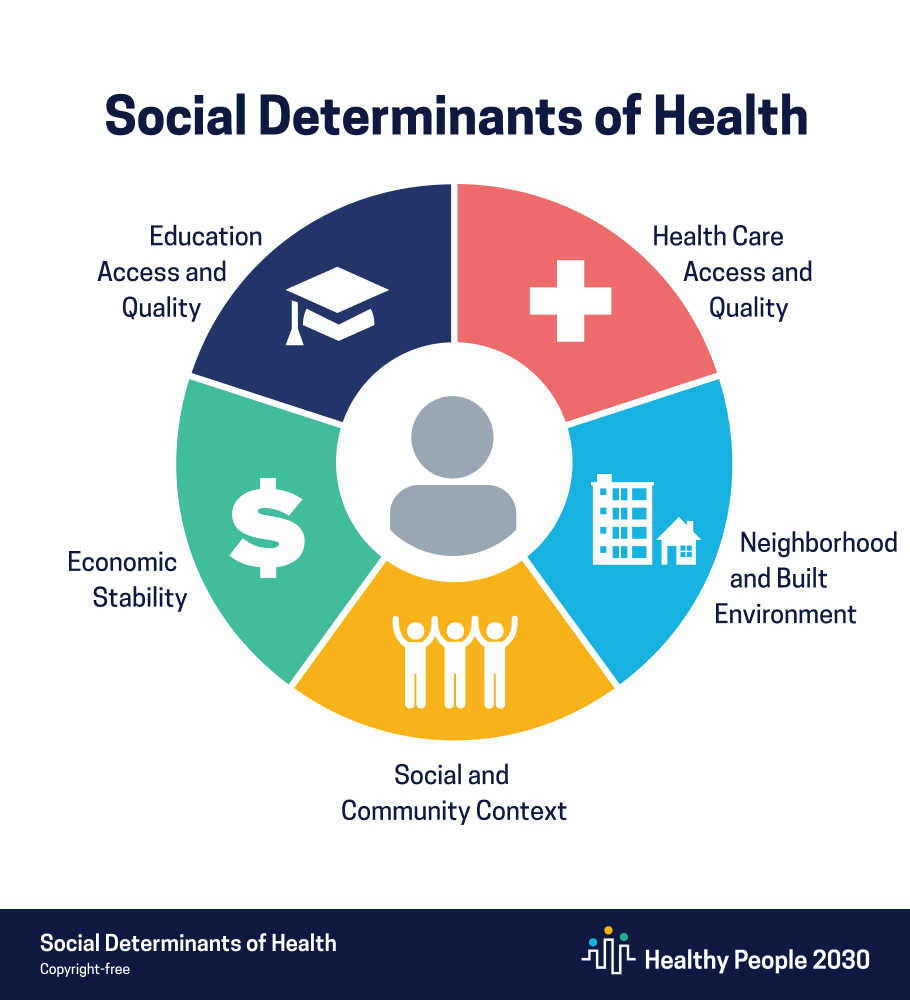Exploring Social Determinants of Health Through Virtual Reality Nursing Education

In today’s healthcare environment, it is essential for nurse learners to understand the impact of social determinants of health (SDOH) on patient outcomes. According to Healthy People 2030, social determinants of health are “the conditions in the environments where people are born, live, learn, work, play, worship, and age that affect a wide range of health, functioning, and quality-of-life outcomes and risks”. The National League for Nursing (NLN) advocates for integrating SDOH across all levels of nursing education—not limiting them to community health courses — as part of core assessment competencies. At UbiSim, our immersive virtual reality (VR) simulations help nurse learners deeply engage with these vital concepts — equipping them to deliver compassionate, culturally humble, and equitable care. As the largest and most trusted segment of the healthcare workforce, nurses play a pivotal role in addressing health disparities and advancing health equity (Oruche & Zapolski, 2022).

Embracing Diversity Across the Lifespan
UbiSim’s patient scenarios span a wide range of life stages, backgrounds, and health conditions. Each case is thoughtfully designed to reflect real-world challenges tied to SDOH—such as housing instability, limited access to nutritious food, education gaps, and transportation barriers. Through meaningful, hands-on experiences in VR, learners deepen their understanding of how where we live, work, and play matters and influences health and healing.
Building Cultural Humility Through Experience
Our VR scenarios feature patients and families representing a broad spectrum of races, ethnicities, religions, gender identities, and sexual orientations. These experiences aren’t just about exposure—they’re about practicing empathy, self-awareness, and respectful communication. Learners are encouraged to reflect on their implicit biases and develop cultural humility: a lifelong commitment to learning, self-evaluation, and equitable care. As the US population becomes more diverse, it is important for nurses to leverage spheres of influence at individual, organizational, and policy levels.
Addressing Health Disparities in Underserved Populations
UbiSim’s diverse patient cases emphasize the complex challenges faced by marginalized and underrepresented groups. Learners confront the realities of income inequality, access disparities, and systemic discrimination — gaining the skills needed to recognize and respond to these issues with empathy and clinical competence.
Caring for Transgender Patients: Skylar’s Story
One impactful scenario introduces Skylar Holmes, a transgender man experiencing abdominal pain due to an ovarian cyst rupture. This case challenges learners to use inclusive language, ask about pronouns, and offer affirming support. It also raises awareness about the barriers transgender patients often face when seeking respectful, informed care. It is important for patients to know that nurses support patients’ participation in all aspects of care, irrespective of patients’ levels of education, language, or racial or ethnic backgrounds or clinical characteristics (Oruche & Zapolski, 2022).
Elderly Isolation and Cognitive Decline: Morgan’s Case
In another simulation, learners meet Morgan Therin, an elderly man with Alzheimer’s disease and signs of neglect and medication non-compliance. This scenario underscores the importance of early intervention, community resources, and a compassionate approach to supporting aging individuals — especially those living alone.
Engaging with Vulnerable Populations
Homelessness and Complex Health Needs: Polly’s Case
Polly Knight, an elderly woman experiencing homelessness and battling community-acquired pneumonia, presents a multifaceted challenge. Learners explore how housing insecurity, limited access to food, and social isolation intersect to impact health outcomes — while practicing nonjudgmental, compassionate care. One of the overarching goals is to achieve health equity, eliminate disparities, and improve the health of all patient populations.
HIV, Stigma, and Support: Tanisha’s Story
Tanisha Reaves is a young woman newly diagnosed with HIV. This simulation scenario encourages learners to consider how unemployment, limited healthcare access, and social stigma affect treatment plans and patient trust. It highlights the need to integrate medical and psychosocial care for holistic outcomes. Nurses should attend, facilitate, and support patients’ voices to ask questions, express opinions, and share decision-making about their care to lead to increased illness self-management and better health outcomes (Oruche & Zapolski, 2022).
Prioritizing Mental Health and Breaking Stigmas
Mental health is woven throughout UbiSim’s scenarios. Learners interact with patients experiencing anxiety, depression, and schizophrenia, developing the clinical judgment and emotional intelligence necessary for inclusive mental healthcare. These experiences emphasize that stigma and discrimination are themselves social determinants — shaping how patients seek and receive care.
Preparing Nurses to Lead With Equity
Through these realistic and thoughtfully designed scenarios, UbiSim is equipping the next generation of nurses to care for patients holistically — acknowledging not only physical symptoms but also the social, emotional, and systemic factors at play. As frontline providers across acute care, primary care, and community settings, nurses are uniquely positioned to recognize and address the social determinants that influence health. But to do this effectively, they must first be equipped with the right education, tools, and experiential learning opportunities. UbiSim’s immersive VR simulations offer a safe environment for developing these essential skills — building the confidence, clinical judgment, and cultural competence needed to advance health equity and deliver truly patient-centered care.
UbiSim was named a TIME best Invention of 2024!
References:
National Advisory Council on Nurse Education and Practice. (2019). Integration of social determinants of health in nursing education, practice, and research: 16th report to the Secretary of Health and Human Services and the U.S. Congress. Health Resources and Services Administration. https://www.hrsa.gov/sites/default/files/hrsa/advisory-committees/nursing/reports/nacnep-2019-sixteenthreport.pdf
National Academies of Sciences, Engineering, and Medicine. (2022). The future of nursing 2020-2030: Charting a path to achieve health equity. National Center for Biotechnology Information. Retrieved from https://www.ncbi.nlm.nih.gov/books/NBK573918/
National League for Nursing. (2019). A vision for integration of the social determinants of health into nursing education curricula. https://www.nln.org/docs/default-source/uploadedfiles/default-document-library/social-determinants-of-health.pdf?sfvrsn=aa66a50d_0
Office of Disease Prevention and Health Promotion. (n.d.). Social determinants of health. U.S. Department of Health and Human Services. Retrieved [March 27, 2025], from https://health.gov/healthypeople/priority-areas/social-determinants-health
Oruche, U. M., & Zapolski, T. C. B. (2020). The Role of Nurses in Eliminating Health Disparities and Achieving Health Equity. Journal of psychosocial nursing and mental health services, 58(12), 2–4. https://doi.org/10.3928/02793695-20201112-01


Christine Vogel is actively engaged in designing, piloting, and evaluating evidence-based immersive VR simulations for nurse learners. She has over 25 years of experience in nursing, and over a decade in nursing academia where she developed, facilitated, and evaluated high-fidelity simulations using various modalities.
Explore more

Patient Acuity: What Nurses Need to Know
Master patient acuity with immersive VR training. Learn to differentiate low vs. high acuity cases, build nurse confidence, & act decisively when every second.
.jpg)
Dr. Dan Weberg Webinar Follow-Up: Answering Your Questions on VR in Nursing Education
Dr. Dan Weberg answers your Q&A from his webinar with UbiSim titled "Closing the Transition to Practice Gap: VR Technology-Enabled Education"

Nursing Continuing Education Requirements by State
Find state-specific nursing continuing education (CE) requirements for RNs, LPNs, and NPs in our complete, easy-to-read guide. Stay compliant today.
